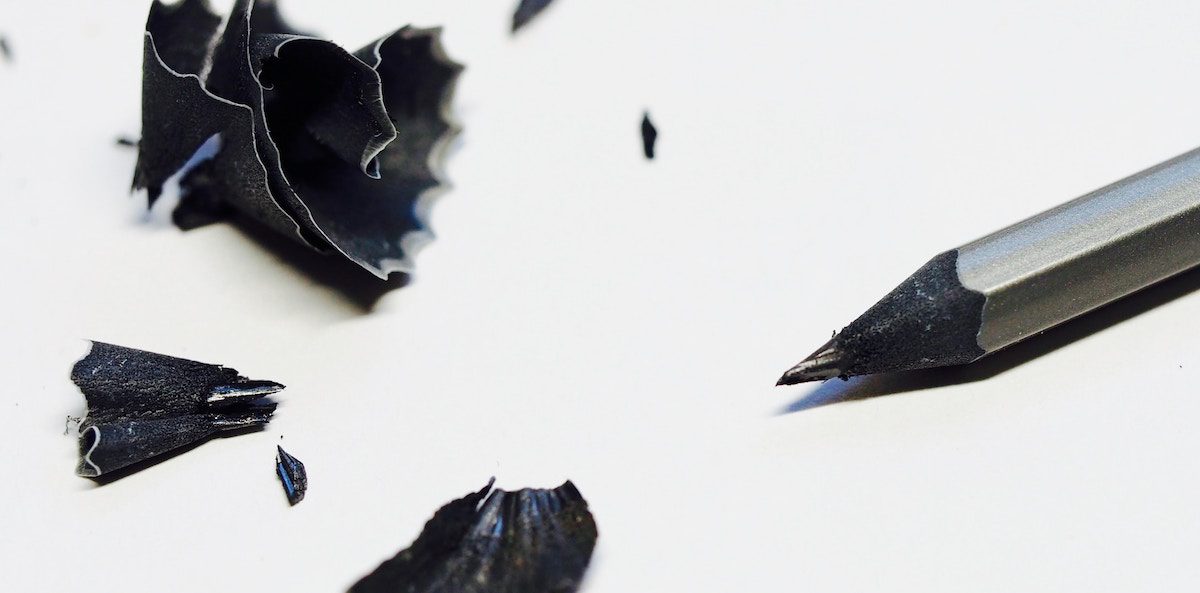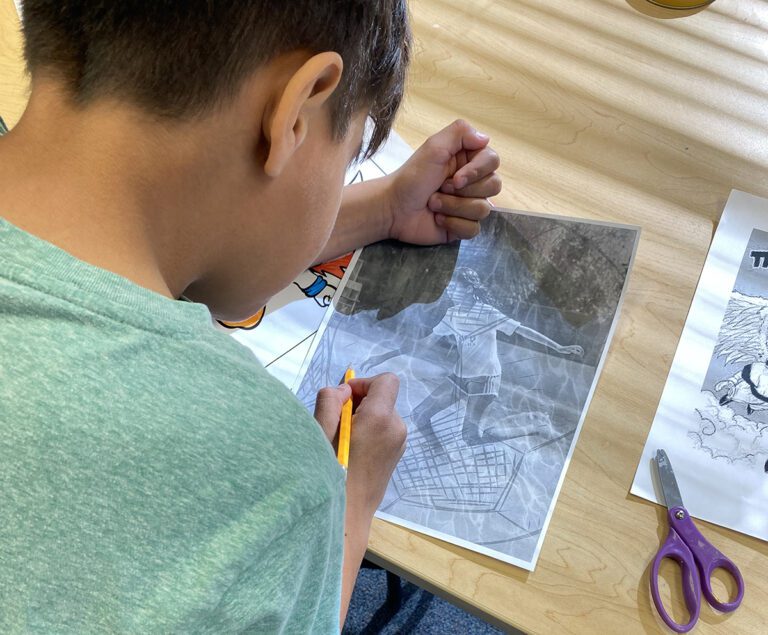Have you ever had a student burst into tears over a seemingly insignificant mistake? What about a student who erases over and over and over again until they wear a hole through their paper? Or, maybe, you’ve even had a student who straight up refused to make anything in your classroom.
Students who exhibit this kind of behavior often have one thing in common: They’re afraid to fail.
They are so caught up in doing everything right; they can’t do anything at all. It’s heartbreaking, and it can be difficult to find ways to reach them.
However, there is one theory out there that directly addresses situations like these and has been shown to help students develop perseverance and grit—growth mindset.
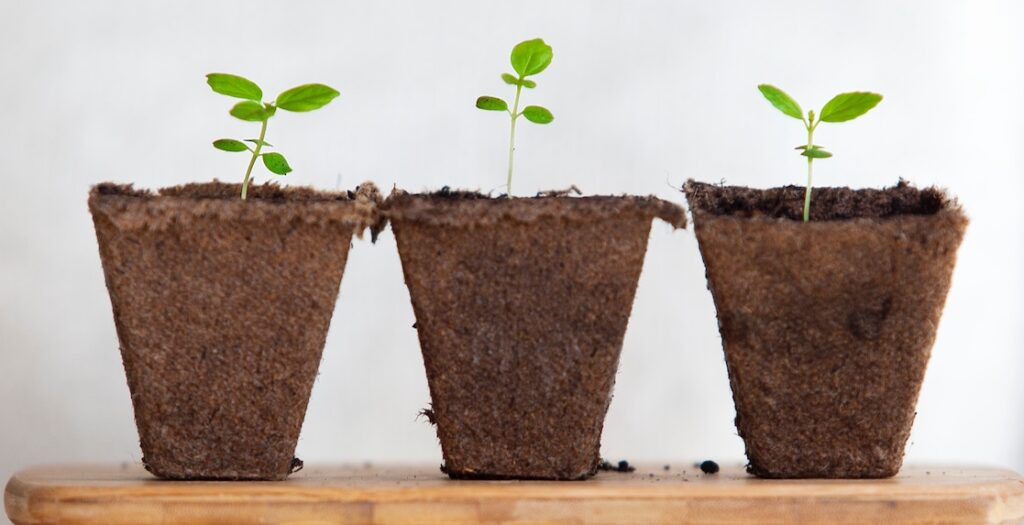
The Growth Mindset Theory
The theory of growth mindset comes from Carol Dweck, a professor at Stanford University. Over 30 years ago, she began researching failure. She found some people bounced back much better from setbacks than others. She described those who failed well as having a “growth mindset” and those who had a hard time with failure as having a “fixed mindset.”
If you’re interested in learning even more about this topic, be sure you check out the Promoting a Growth Mindset in the Art Room Learning Pack. You’ll learn how to tweak both your teaching practice and classroom setup to foster a growth mindset in your students. Plus, learn how to apply what you learn to your own life!
Dweck’s research eventually led to her best-selling book, Mindset: The New Psychology of Success. In the book, she describes the differences between the two groups which you can see outlined in the chart below.
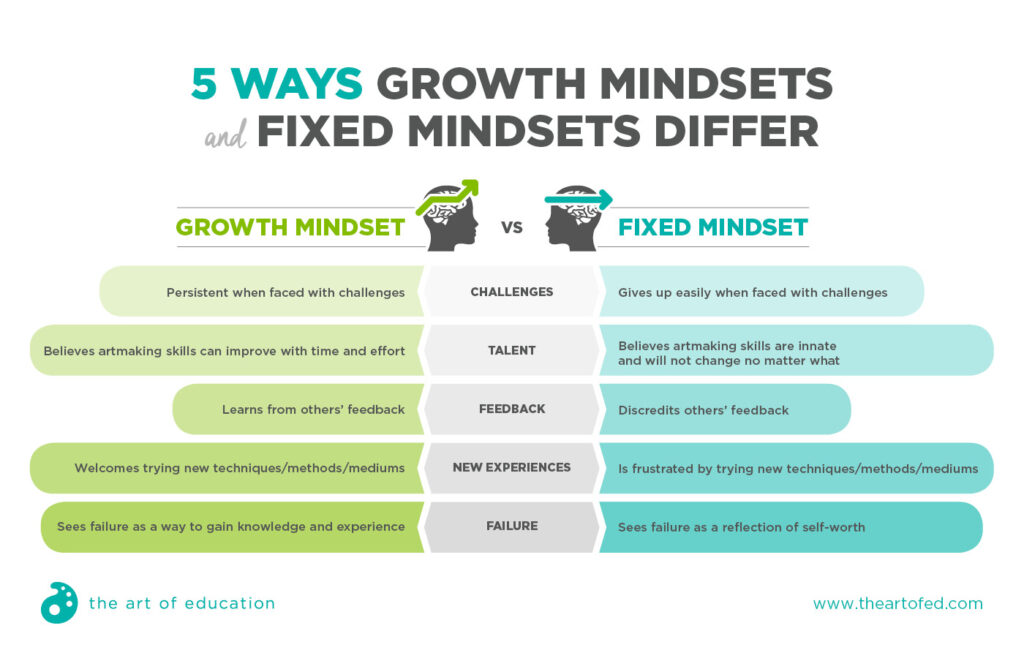
Furthermore, Dweck found cultivating a growth mindset can have major implications for learning and achievement. In short, “When students believe they can get smarter, they understand that effort makes them stronger. Therefore they put in extra time and effort, and that leads to higher achievement.”
So, it’s pretty clear a growth mindset is something we should all try to instill in our students. But how?
3 Art Activities to Help Your Students Deal with Mistakes
While digging into the research behind growth mindset, one thing I found fascinating was the fact that it only takes a lesson or two to start opening students up to the idea that they can improve with practice. This is great news because we all know art teachers are short on time! Below are three simple, one-day art activities to start to teach students how to get through the act of making a mistake.
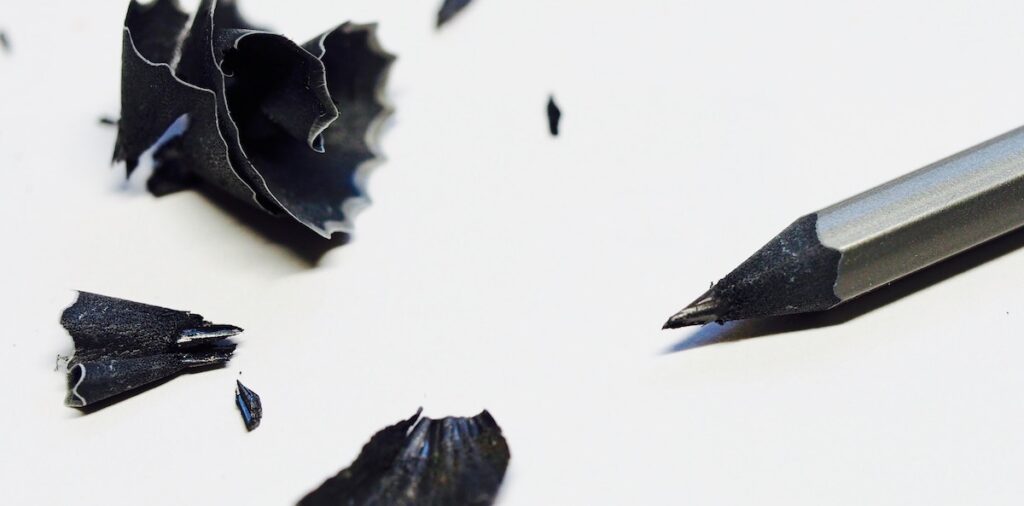
1. Losing Control
Many times, it’s not even the fact that a student has made a mistake that sends them into a tizzy. It’s the fear that they will make a mistake. So, why not encourage them to do so? Allowing them to practice making mistakes, brainstorming solutions, and carrying out a plan to fix things can ease students’ anxiety down the road.
There are many different ways you can challenge your students with materials. Here are 3 ideas to try.
- Only allow your students to draw with stubby crayons or small bits of oil pastel.
They will be frustrated by their lack of control, but it may lead to some new discoveries! - Make your students tape their art materials (drawing pencils, paintbrushes, markers, etc.) to long sticks for an entire class period.
This idea comes from Julie Read, and really forces students to get out of their comfort zones. - Try ink drawings with nib pens.
If you’ve used nib pens before, you know they can splat at a moment’s notice. Letting your students try their hand at these is a great way to help them work through mistakes.
2. Art Hospital
Sometimes, all it takes is putting a humorous twist on things to create buy-in from your kids. Why not try turning your art room into an “art hospital” for a day?
Before your students arrive, prep various pieces of paper with “mistakes.” Blobs of paint, rips, pieces of tape stuck in weird places, holes, etc.
Your students will love turning these papers into masterpieces! And, they will see they have the power to take something traditionally seen as a mistake and make it into something beautiful.
Start with Beautiful Oops! by Barney Saltzberg if you’re doing this activity with younger students. Older students will enjoy The Book of Mistakes by Corinna Luyken.
3. Drawing in the Dark
We’re all familiar with the power of blind counter to improve drawing skills, but this exercise takes things a step further.
Instead of doing a quick blind contour study, have your students create art “in the dark.” Then, have them turn whatever they create into a finished piece. You can go about this in a variety of ways, but the idea is to create limitations that may lead to undesirable results.
Here are 3 different ideas to try.
- Turn off the lights.
Turn off the lights for the first five to ten minutes of class. Creating in the dark will make color choices less apparent and details more difficult to see. After the time is up, turn the lights back on and have students take what they’ve created and make it into a finished piece. - Use only white crayon or oil pastel.
Challenge your students to draw something using only a white oil pastel or white crayon on white paper. Have them use the last ten minutes of class to add watercolor to reveal their marks. - Block your students from seeing what they’re doing.
Ask your physical education teacher if they have any basketball dribbling goggles around. They’re the perfect way to encourage your students to keep their eyes off their papers. Depending on your students, you could also use blindfolds or just trust them to keep their eyes closed! Once again, have students create for a short amount of time and use the remainder of class to work with their “mistakes.”
No matter which activity you choose, teaching students that mistakes are part of learning will benefit them for years to come. Remember, presenting just one lesson on the idea of growth mindset can help students begin to see how their skills can improve with time and effort!
If you’re looking for even more ideas for the classroom, including how to set up your physical classroom space to foster a growth mindset in your students, click here!
How do you foster a growth mindset among your students?
Do you have any other activities to help students value failure?
Magazine articles and podcasts are opinions of professional education contributors and do not necessarily represent the position of the Art of Education University (AOEU) or its academic offerings. Contributors use terms in the way they are most often talked about in the scope of their educational experiences.
